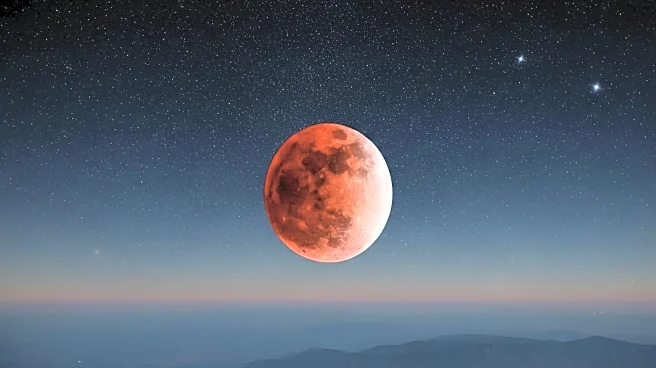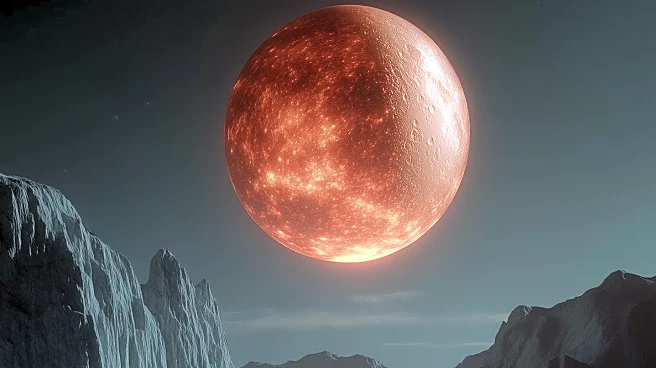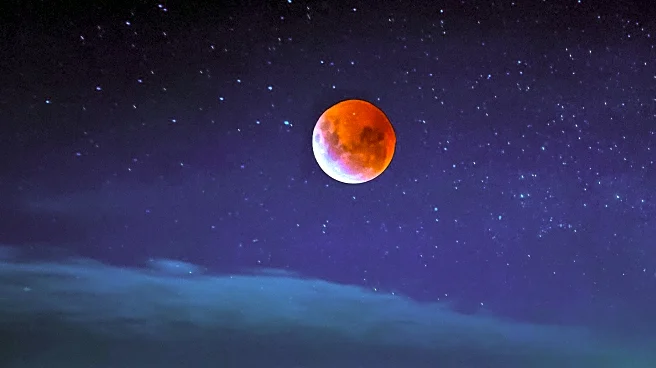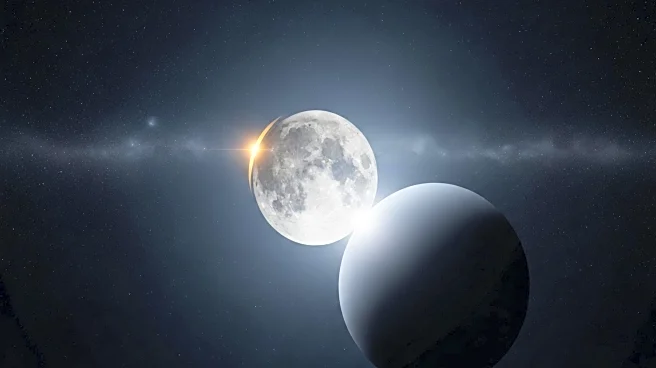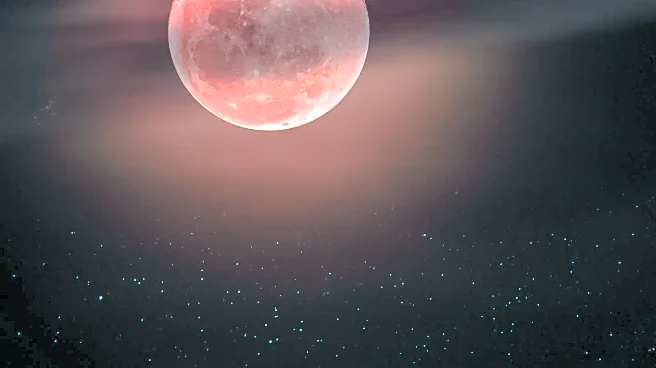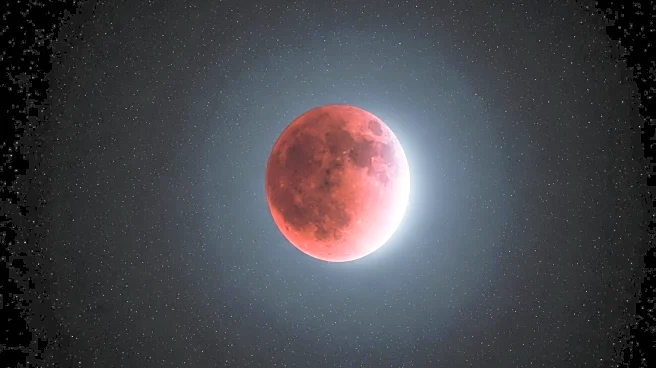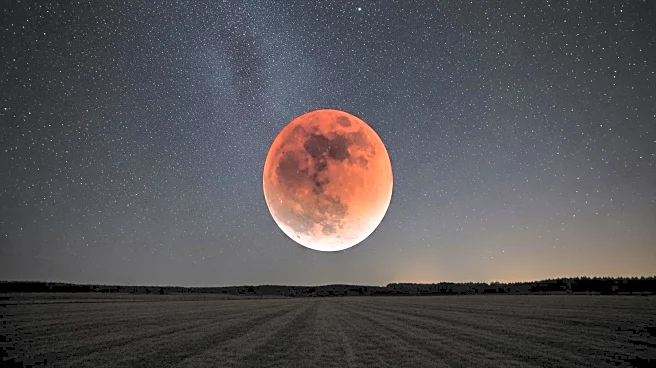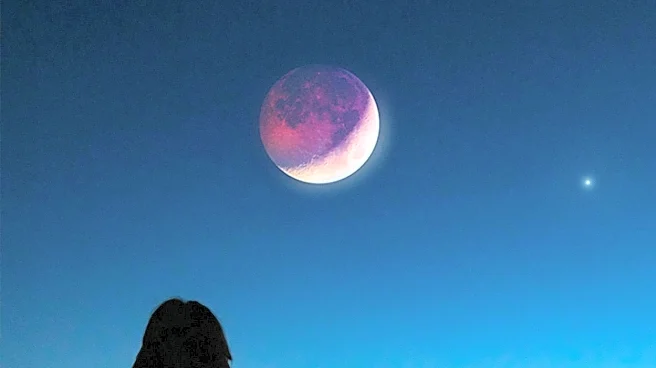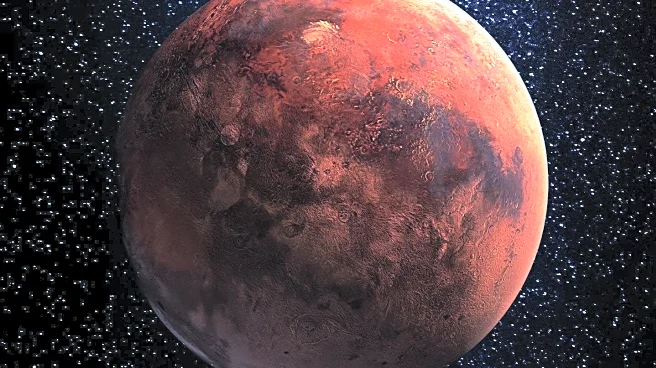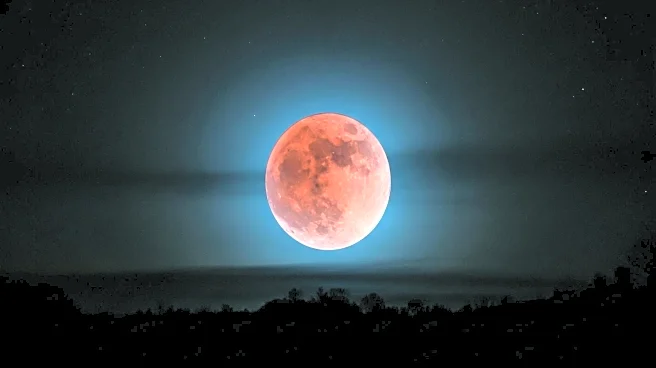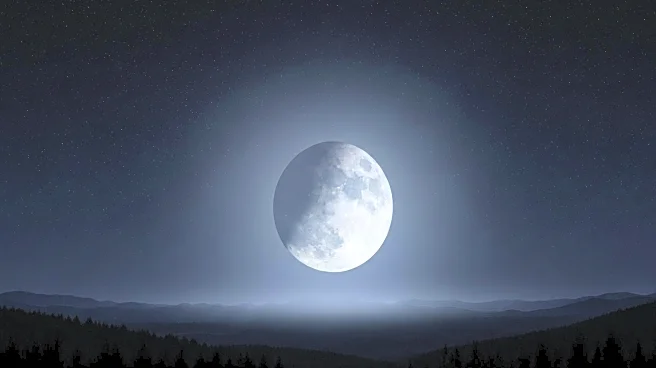What's Happening?
A total lunar eclipse, known as a blood moon, will occur on September 7-8, 2025. This celestial event will be visible across Europe, Africa, Asia, and Australia, but not in North or South America. During the eclipse, the moon will take on a reddish hue as Earth's shadow covers it completely. The eclipse will last for approximately 82 minutes, with the total event spanning over five hours. The phenomenon occurs when the Earth is positioned between the sun and the moon, causing the moon to reflect sunlight filtered through Earth's atmosphere, which scatters blue light and leaves a red glow.
Why It's Important?
The blood moon is a rare astronomical event that captivates skywatchers and provides a unique opportunity for scientific observation. It highlights the intricate dynamics of celestial bodies and their interactions. For astronomers and enthusiasts, it offers a chance to study the Earth's atmosphere and its effects on light. The event also draws public interest, fostering a greater appreciation for astronomy and science. Economically, it can boost tourism in regions where the eclipse is visible, as people travel to witness the spectacle.
What's Next?
For those unable to view the eclipse in person, live streams will be available, allowing global audiences to experience the event virtually. The next total lunar eclipse visible in the Americas is scheduled for March 3, 2026. This upcoming event will provide another opportunity for observation and public engagement. Meanwhile, astronomers will continue to analyze data from the eclipse to enhance understanding of atmospheric conditions and celestial mechanics.
